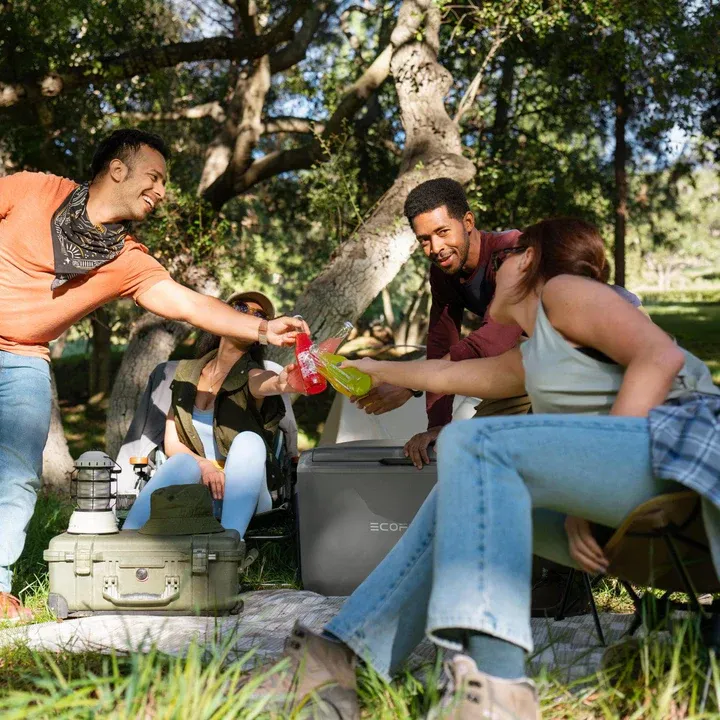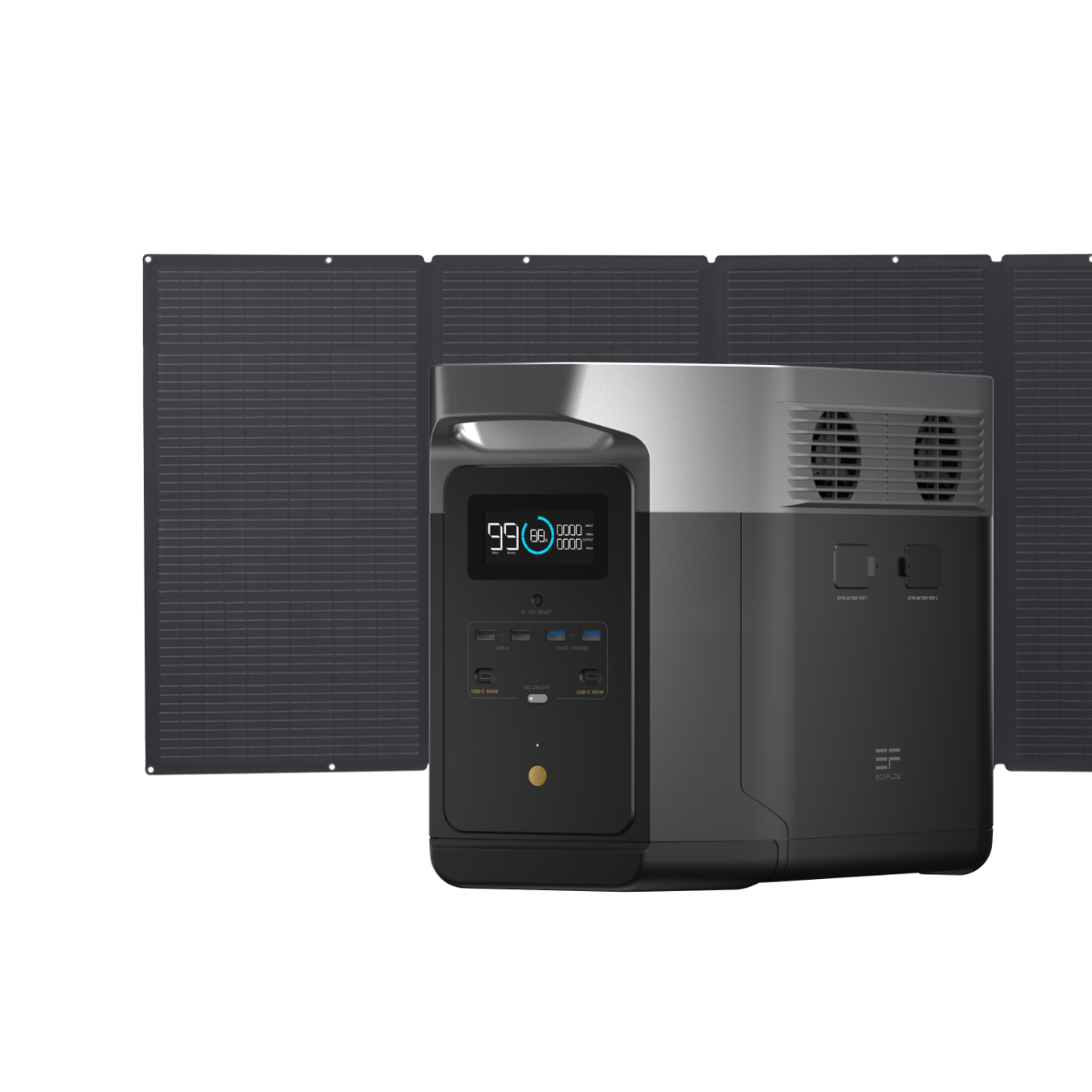The Ultimate Guide to Hurricane Food Preparedness with a Portable Power Station
- What to Include in a Smart Hurricane Food List
- How to Organize and Rotate Your Hurricane Food List
- How Power Loss Threatens Your Hurricane Food List
- Common Mistakes in Hurricane Food Planning
- How Large Families Can Protect Their Hurricane Food List with Backup Power
- EcoFlow DELTA Pro: Powering Your Hurricane Food List with Confidence
- Final Hurricane Food List and Power Checklist for Full Home Readiness
- FAQs: Hurricane Food List and Backup Power Questions You Didn’t Know to Ask
- Closing Thoughts: Food + Power = Real Preparedness
Building a hurricane food list helps protect your family when storms hit. But food alone is not enough. A power outage changes everything. Your fridge stops. Your stove won’t heat. Frozen food starts to spoil. For large homes with freezers, full-size kitchens, and family members to care for, backup power becomes just as important as food and water.
If you want real disaster readiness—not just a shelf full of cans—you need both food and a way to use it.
What to Include in a Smart Hurricane Food List
A basic hurricane food list might include just canned soup and bottled water. But a smart one goes further. It keeps your family full, healthy, and less stressed during long outages. Here’s what to include:
Core Food Staples:
- Canned beans, meats, tuna, and chili
- Dry carbs: rice, pasta, oats, crackers
- Peanut butter and other shelf-stable fats
- Ready-to-eat meals or dehydrated packs
Fluids and Nutrition:
- 1 gallon of water per person per day
- Shelf-stable milk and powdered drink mix
- Electrolyte tablets or hydration powders
Snacks and Extras:
- Trail mix, granola bars, cookies
- Instant coffee or tea
- Dried fruits and jerky
Special Needs:
- Baby formula and toddler foods
- Low-sodium or diabetic-safe options
- Pet food
You can store most of these without a fridge. But if you want to include frozen meals, dairy, or fresh produce, a powered cooling solution is essential. This is where a modern portable fridge-freezer becomes invaluable, giving you the freedom to bring fresh food anywhere.


How to Organize and Rotate Your Hurricane Food List
Once you build your food supply, don’t forget to manage it.
Pro Tips:
- Use bins to divide your items: dry, canned, refrigerated
- Write expiration dates with a black marker
- Rotate every 6 months using “first in, first out.”
- Freeze extra bread, cooked rice, or meals if you have power
Big homes often rely on chest freezers or garage fridges. Those give you more options—but only if the power stays on.
How Power Loss Threatens Your Hurricane Food List
Without electricity, even a perfect hurricane food list can fail. Here's how long your food stays safe:
| Appliance | Time Until Spoilage |
| Refrigerator | ~4 hours (unopened) |
| Freezer (full) | ~48 hours (unopened) |
| Freezer (half) | ~24 hours (unopened) |
| Room-temp food | OK, if sealed and dry |
If you lose power for more than a day, you may have to throw away hundreds of dollars of food. For families who store bulk or frozen items, this is a big risk.
Frozen meat, dairy, and cooked meals can spoil fast once the freezer warms. Even if food looks safe, it may not be.
Losing that much food during a storm adds stress and limits what your family can eat—especially if stores are closed or shelves are empty. That’s why a reliable power backup is just as important as the food itself.
Common Mistakes in Hurricane Food Planning
Many people build a hurricane food list that looks good on paper—but doesn’t work in real life. It’s easy to stock up in a rush and miss key details. When the power goes out, and the stress sets in, gaps in planning become clear.
Watch out for these common errors:
- ❌ Only buying snacks, not meals
- ❌ Forgetting cooking tools or utensils
- ❌ No plan to keep food cold
- ❌ Storing too much of one item
- ❌ Not checking expiration dates
To avoid these problems, build your food and power strategy together. Think about what you’ll eat, how you’ll prepare it, and how you’ll keep it safe—especially if you're without electricity for more than a day. A good hurricane food list works because it's supported by smart planning, not just good intentions.
How Large Families Can Protect Their Hurricane Food List with Backup Power
In big homes, more people means more food. It also means more gear: electric kettles, rice cookers, freezers, and medical storage. Without electricity, you lose the ability to:
- Keep milk or formula cold
- Cook pasta, boil water, or reheat food
- Use blenders for smoothies or shakes
- Power health devices or air circulators
Even gas appliances often use electric ignition or safety systems. For long outages, power is no longer a luxury—it’s a requirement, and having a plan for it is a key part of how to secure your home.
EcoFlow DELTA Pro: Powering Your Hurricane Food List with Confidence
For families preparing full-home food systems, the EcoFlow DELTA Pro Portable Power Station offers the best support during outages.
Key reasons it matches your hurricane food strategy:
3600W–7200W Output: Runs large fridges, freezers, cookers, and more
3.6kWh to 25kWh Storage: Expandable to power multi-day outages
Recharge Anywhere: From the wall, EV stations, solar, or generator
Fast Refill: 2.7-hour AC full charge
Long Life LFP Battery: Over 10 years of storm seasons
You can plug your fridge, induction burner, freezer, or even a microwave directly into DELTA Pro. It turns your food storage plan into a working system.
Final Hurricane Food List and Power Checklist for Full Home Readiness
A complete hurricane food list is more than groceries. Use this list to stay ready:
FOOD & FLUIDS
- ✅ 7 days of shelf-stable meals
- ✅ 1 gallon of water per person/day
- ✅ Snacks, electrolytes, powdered drinks
- ✅ Items for pets and babies
STORAGE & TOOLS
- ✅ Plastic bins and food labels
- ✅ Manual can opener and utensils
- ✅ Zip bags, foil, disposable plates
- ✅ Low-power cooker or stove
POWER SUPPORT
- ✅ EcoFlow DELTA Pro or similar high-output station
- ✅ Solar panel or EV station recharge plan
- ✅ Backup light sources, chargers, radios
Being prepared means not just having food—but knowing you can cook it, store it, and protect it.


FAQs: Hurricane Food List and Backup Power Questions You Didn’t Know to Ask
Q1. Should I separate my food list by storm phase (before/during/after)?
Yes, separating your food list by storm phase helps you stay organized and reduces waste during an emergency. Before the storm hits, focus on using fresh food from the fridge—milk, fruit, leftovers—because these will spoil first if power is lost. During the storm, rely on shelf-stable, ready-to-eat items that don’t require cooking, such as canned meals or granola bars. After the storm, when power is restored or your portable power station is active, you can use frozen meals, reheat food, or cook more complex dishes again. Thinking in phases makes meal planning easier and avoids opening the fridge too often when you’re trying to preserve cold storage.
Q2. Is it safe to use portable power indoors for cooking?
Electric power stations like the DELTA Pro are safe indoors precisely because they are leading examples of the best indoor generators available today. However, it’s important to avoid any fuel-based devices such as gas generators, propane stoves, or charcoal grills inside your home, as they pose serious risks of fire or carbon monoxide poisoning. For indoor cooking, electric options such as an induction cooktop, rice cooker, or microwave are ideal. Just make sure your power station has the correct wattage capacity for the appliance you’re using, and always follow the manufacturer's safety guidelines.
Q3. Can I store power backup and food in the same room?
Yes, if the space is cool, dry, and protected from flood risk. Keep power stations off the ground and food in waterproof bins. Avoid areas like uninsulated garages or attics where temperatures can swing wildly, which may reduce both battery performance and food quality. As long as the environment is stable, combining storage is safe and space-efficient.
Q4. How can I tell if frozen food is still safe after power loss?
One popular trick is to freeze a small cup of water and place a coin on top of the ice. If the power goes out and the freezer warms, the ice will melt and the coin will sink. When you check later, if the coin is still on top, your food likely stayed frozen. If the coin is at the bottom, the temperature will likely rise too high, and the food may not be safe to eat. Even if frozen items look okay, always check for signs of thawing or spoilage. If the food smells off, feels mushy, or has odd coloring, it’s safer to discard it.
Q5. What’s the best power storage size for a full-family hurricane plan?
For a family household, it’s smart to start with at least 3.6kWh of battery storage to cover essentials like your refrigerator, freezer, and some light cooking needs for a day. If you rely on multiple appliances or want to maintain power for several days, especially during extended outages, you'll need a system that scales up to 10kWh or more. The EcoFlow DELTA Pro is designed with expansion in mind and can grow with your needs by adding extra batteries or solar panels. Choosing the right capacity depends on how many devices you want to run, how long you need them, and how you plan to recharge the system during or after a storm.
Closing Thoughts: Food + Power = Real Preparedness
Anyone can build a hurricane food list. But few people build a system that works when power is gone. A stack of canned goods helps, but it won’t keep milk cold, heat a meal, or run your freezer when it matters most.
With shelf-stable meals, safe storage, and a strong power station like the EcoFlow DELTA Pro, you get more than survival. You get hot meals, fresh food, and a sense of calm even when the storm outside gets worse.
Storms are coming. Are you ready to stay powered and prepared?